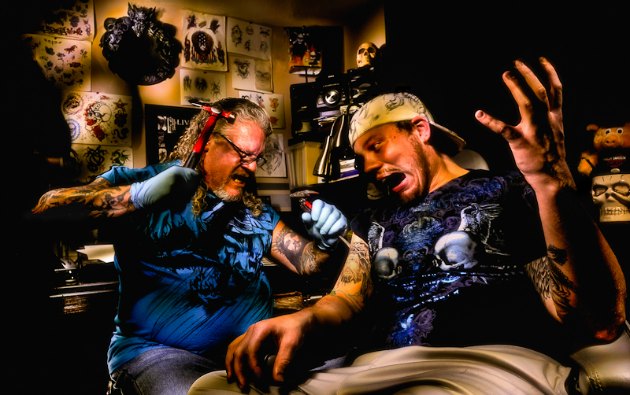Tattoos are very popular among both men and women, and according to a recent research, almost 25 percent of people aged 18-30 years have at least one tattoo. When it comes to tattooing, according to a research, 59 percent of women have tattoos compared to 41 percent of men. A tattoo is something personal and each tattoo holds a different meaning, so if you are planning to get a tattoo soon, you should think about the right design and to decide where would you want your tattoo located. The location of the tattoo is very important, but most common tattoos are shoulder, chest tattoos, leg, lower back and forearm tattoos. You should also do a research, in order to find the most reputable tattoo studio with good, experienced tattoo artists. So, think carefully before getting a tattoo and inform yourself about any possible risks to your health. Here are our tips for safe tattooing!
- The process of tattooing should be done in a clean and hygienic tattoo studio with sterile supplies and uncontaminated ink, in order to avoid infections such as viral hepatitis B and C, HIV infection, tetanus, tuberculosis, staphylococcal infections and bacterial and fungal infections of the skin.
- The tattoo artist should open a new package of sterile needles and a new set of inks for tattooing, in front of the client. The tattooist must wear disposable gloves and the wound should be cleaned regularly with clean, damp towel during the tattooing.
- The first tattoo machine was invented and patented by tattoo artist, Samuel O’Reilly in 1981 and has undergone only slight modification since then in 1929. The needle moves about an eight of an inch or 2 mm in and out. When the needle is touched to the skin, it drives ink particles into the skin.
- Tattoos that are more exposed to the sun can quickly fade, and this tendency also have tattoos done on hands and feet. The aging process also affects the appearance of tattoos as the skin loses its elasticity, so the tattoos on certain parts of the body such as the waist will quickly lose their shape, while shoulder tattoos will last longer.
- Different individuals have different pain tolerance levels, though many tattoo artists claim that women tolerate pain better and tattoos in areas with softer skin are more painful.
Removing a tattoo is neither cheap nor easy and most likely will leave a scar. There are three most common methods of tattoo removal:
- Surgical removal which involves cutting out the skin which contains the tattoo. This is an effective procedure, but it leaves a noticeable scar and is recommendable only for small tattoos.
- Dermabrasion, which uses a high-speed rotary device to gently and carefully “sand” the top surface of the skin down, allowing the tattoo ink to leach out of the skin. However, dermabrasion may not be able to completely remove the tattoo.
- Laser removal is the most common method of tattoo removal. The process involves pulsed lasers, which emit concentrated light energy in short bursts.



